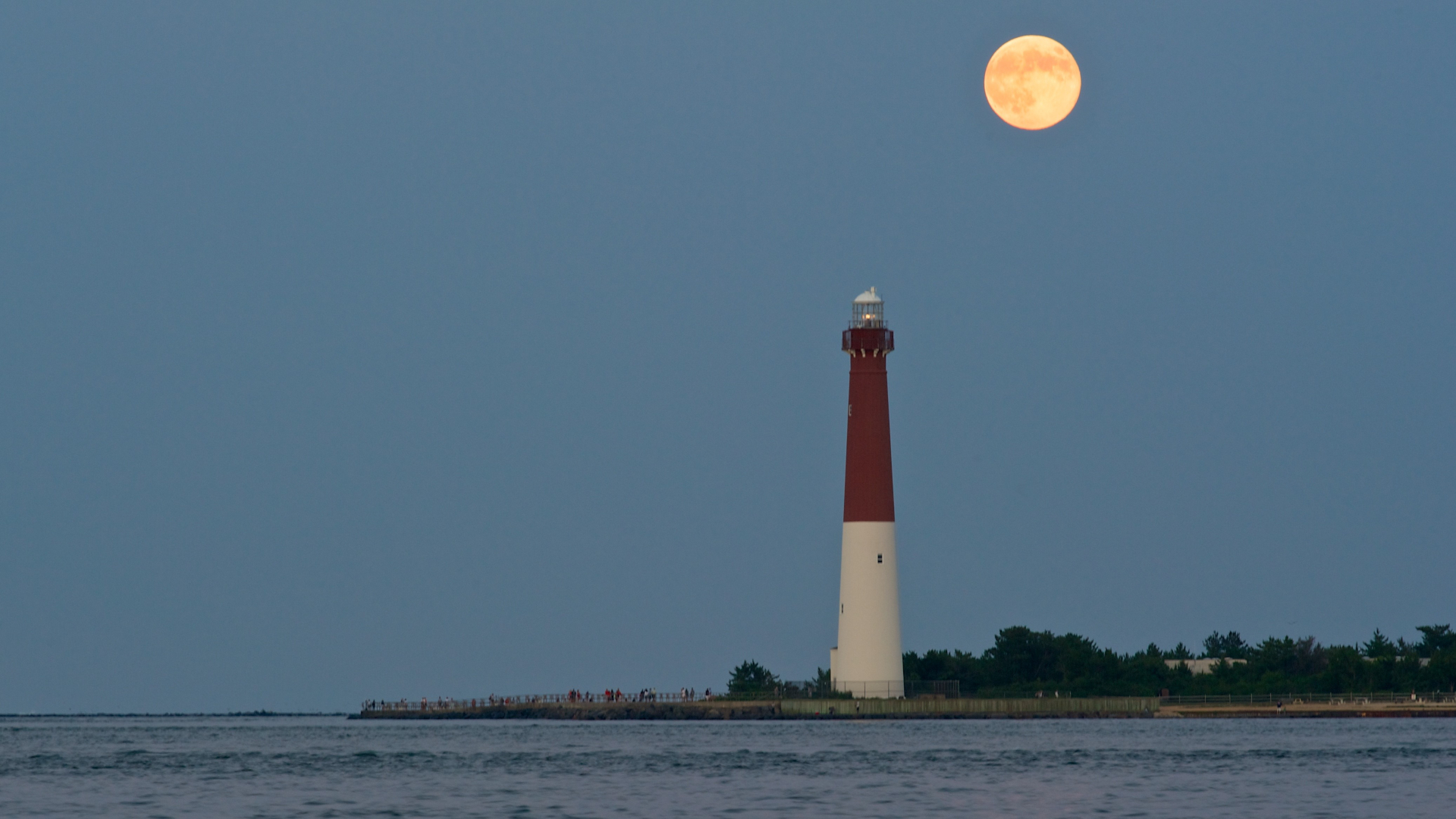Sturgeon Supermoon: August's Sturgeon Full Moon will be the last of 4 in a row
The Sturgeon supermoon won't be welcomed by all this year.

The fourth and final supermoon of 2022, known as the Sturgeon Moon, will occur on Thursday, August 11 at approximately 9:36 p.m. EDT and 6:36 p.m. PDT (Friday at 01:36 GMT.)
Look to the southeastern sky to see the Sturgeon supermoon shining about a slim palm's width to the lower right (or 5 degrees to the celestial south) of Saturn, according to astronomer Chris Vaughan of Astrogeo.ca, who prepares Space.com's monthly Night Sky calendar in cooperation with Simulation Curriculum.
This dazzling lunar show likely won't be appreciated by everyone as it unfortunately clashes with one of the most anticipated meteor showers of the year — the Perseid meteor shower. While most observers in North America would normally be able to see 50 or 60 meteors per hour, the full moon will reduce the visibility of meteors to about 10-20 per hour at most according to a statement from NASA.
Related: The brightest planets in August's night sky: How to see them (and when)
A full moon occurs when the moon and sun are opposite each other and sunlight strikes the moon face-on. As such, it can be tricky to see features on the lunar surface in detail during a full moon due to the lack of shadows.

Looking for a telescope for the next stargazing event? We recommend the Celestron Astro Fi 102 as the top pick in our best beginner's telescope guide.
Supermoons occur when the full moon coincides with the moon's closest approach to Earth in its orbit — known as perigee. According to the Farmer's Almanac and Fred Espanak, eclipse expert and retired NASA astrophysicist, the definition of a supermoon is a full moon within 90% of its closest approach to Earth gives us four to view this year, we have already seen three in May, June and July and August's supermoon will be the last of the year. But supermoon streaks like the one we've seen this year are not particularly uncommon. Per his website, 2023 will also see four consecutive full supermoons, as will 2024. Even 2025 has three in a row.
If you're looking for a telescope or binoculars to observe the last supermoon of the year, our guides for the best binoculars deals and the best telescope deals now can help. Our best cameras for astrophotography and best lenses for astrophotography can also help you prepare to capture the next skywatching sight on your own.
Get the Space.com Newsletter
Breaking space news, the latest updates on rocket launches, skywatching events and more!
Want to take a more in-depth tour of our rocky companion? Our ultimate guide to observing the moon will help you plan your next skywatching venture whether it be exploring the lunar seas, mountainous terrain, or the many craters that blanket the landscape. You can also see where astronauts, rovers and landers have ventured with our Apollo landing sites observing guide.
The next full moon will occur on Sept. 10 and is known as the "Harvest Moon."
Follow us on Twitter @Spacedotcom and Facebook.
Join our Space Forums to keep talking space on the latest missions, night sky and more! And if you have a news tip, correction or comment, let us know at: community@space.com.

Daisy Dobrijevic joined Space.com in February 2022 having previously worked for our sister publication All About Space magazine as a staff writer. Before joining us, Daisy completed an editorial internship with the BBC Sky at Night Magazine and worked at the National Space Centre in Leicester, U.K., where she enjoyed communicating space science to the public. In 2021, Daisy completed a PhD in plant physiology and also holds a Master's in Environmental Science, she is currently based in Nottingham, U.K. Daisy is passionate about all things space, with a penchant for solar activity and space weather. She has a strong interest in astrotourism and loves nothing more than a good northern lights chase!









